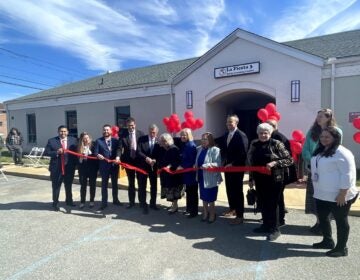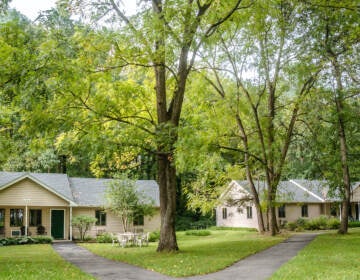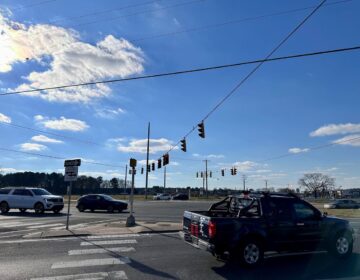Dehumidifier now operational on Delaware Memorial Bridge
A $35 million project to extend the lifespan of the Delaware Memorial Bridge by keeping humid air away from the main suspension cable is finally finished.
A $35 million project to extend the lifespan of the Delaware Memorial Bridge by keeping humid air away from the main suspension cable is finally finished.
Delaware River and Bay Authority leaders crowded into a tiny control room on the Delaware-bound side of the bridge’s main anchorage Tuesday afternoon to officially start running the new system. The small room is tucked into the massive concrete foundation for the bridge cables. Inside the room, the system creates dry air that is then pumped along the length of the main bridge cable, forcing moist, humid air away from the cables. That dehumidification process is expected to greatly reduce corrosion along the main cables.
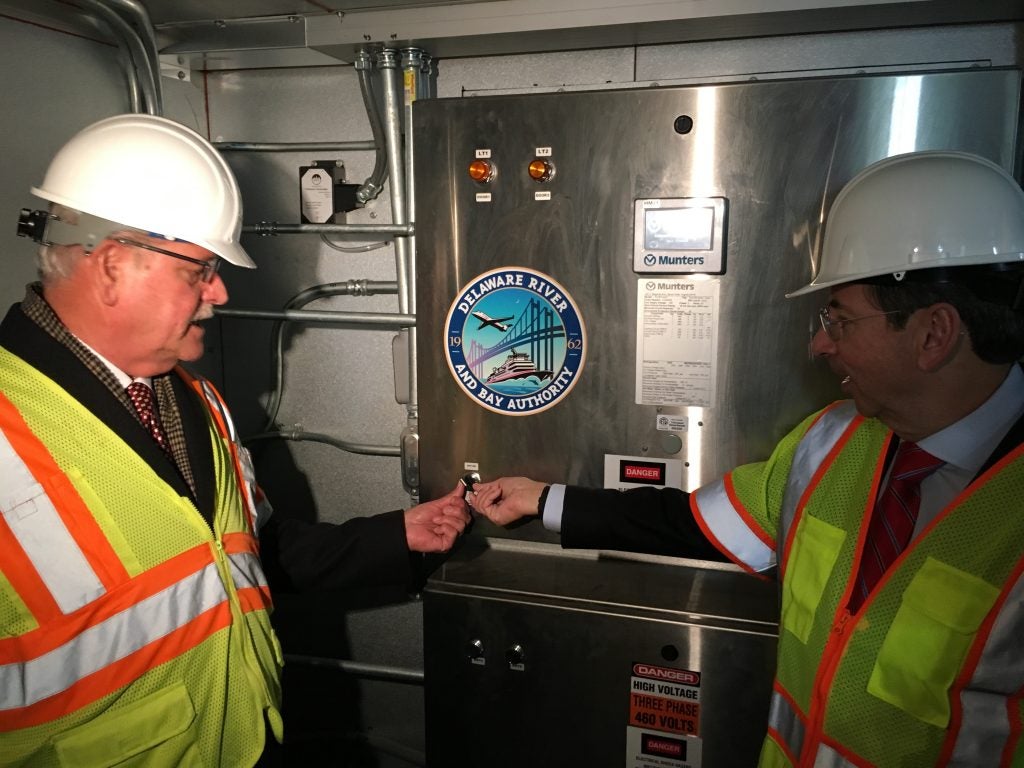
“We want [the humidity] to go as low as possible,” said Shekhar Scindia, DRBA senior structural engineer. “Once the humidity levels inside the main cables drop below 30 or 40 percent, we have evidence that shows corrosion rates practically drop to nil.”
Preventing corrosion is key to extending the lifespan of the bridge. Corrosion has caused failures for bridges younger than the Delaware Memorial Bridge spans, which were built in 1951 and 1968, according to Scindia. “By doing this, our intent is to extend the lives [of the cables] for posterity, extend the lives of the main cables where they are in good condition, even when the rest of the structure falls apart, or has problems.”
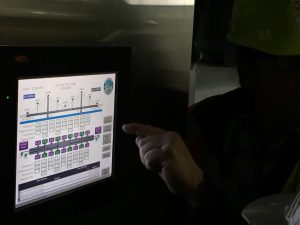
The $35 million project was funded with toll revenue collected at the bridge, and while the price is steep, it’s nothing compared to the expense if there were to be a problem with the main cables.
“It’s the one part of the bridge, that, if it failed, it’s cheaper to build a new bridge. Everything else we can fix, we can repair, we can upgrade, but if the main cables fail, you might as well build a new bridge,” said Vince Meconi, DRBA chief operations officer. A new bridge would cost as much as $1.3 billion.
“Obviously it’s a lot cheaper to pay $35 million to dehumidify the cables than to build a new bridge, so this is what infrastructure maintenance should look like around the country, and we’re very happy to be able to do it here.”
DRBA officials weren’t able to put a time frame on exactly how much longer the project would extend the life of the main cables. “By doing this, our intent is to extend the lives [of the cables] for posterity, extend the lives of the main cables where they are in good condition, even when the rest of the structure falls apart, or has problems,” Scindia said.
WHYY is your source for fact-based, in-depth journalism and information. As a nonprofit organization, we rely on financial support from readers like you. Please give today.



